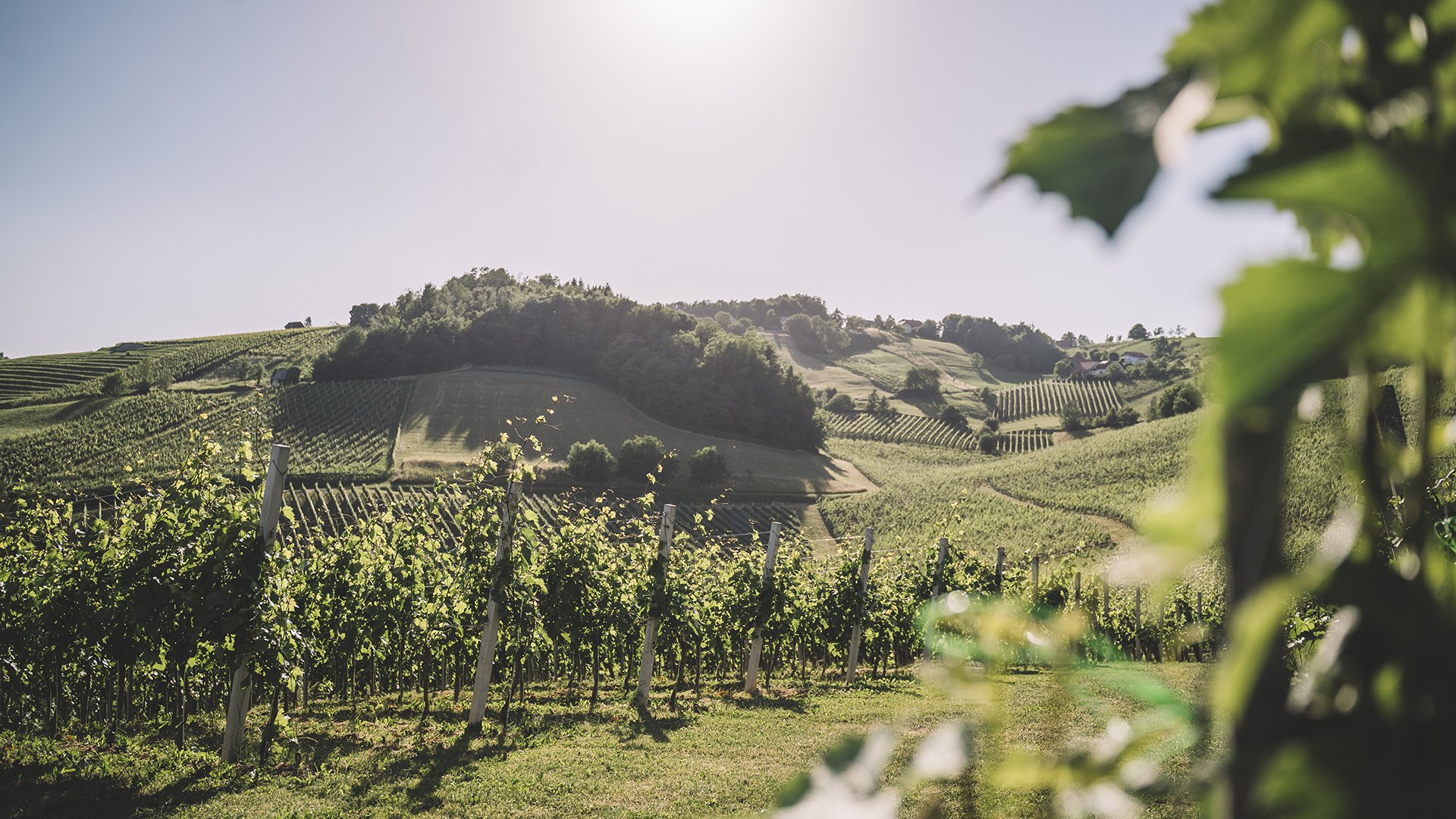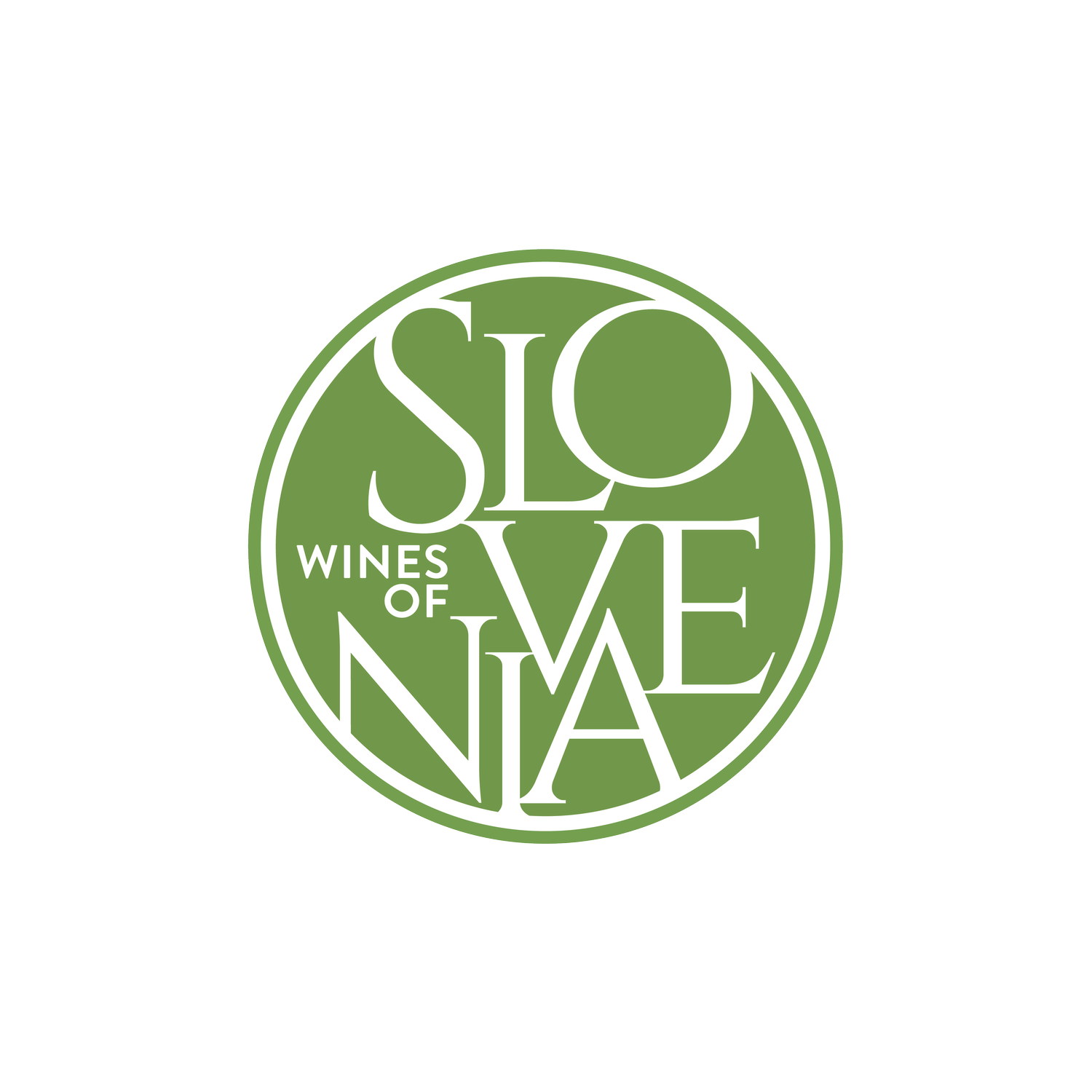
SLOVENIAN
WINE REGIONS & DISTRICTS
SLOVENIA’S WINE REGIONS & APPELLATIONS
Slovenia is divided into three wine regions, and each region is divided into districts according to their distinct location, topography, and climate.
What unites all of them is dry farming and the dominance of manual work in the vineyard, as they are mainly located on the slopes and terraces.
WINE REGION: PODRAVJE
The Podravje region takes its name from the Drava River. It is located in the north-east of Slovenia and includes the Štajerska Slovenia and Prekmurje districts. The climate here is continental.
-

Štajerska Slovenia District
Štajerska Slovenia lies in the northeast and its name literally means 'Slovenian Styria’. The other part of Styria (Steiermark) lies in Austria. Štajerska Slovenia is the country’s largest wine district with 5.473 hectares of vineyards, located mostly on the rolling hills and terraces. The district gets its cooling influence from the Alps to the west.
Cooler continental climates promote growing some of the most aromatic and fresh Slovenian whites: Sauvignon Blanc, Furmint, Riesling, Chardonnay, Welschriesling, Traminec and Muscat. Red wines are a recent phenomenon, and Pinot Noir has already shown its potential.
District specialties are lusciously sweet and well-balanced botrytis and ice-wines made of Welschriesling and Furmint.
Soils vary from limestone and marl, to slate, granite, gneiss and volcanic tuff, and therefore terroir-driven, single-vineyard approach is in focus here.
-

Prekmurje District
The name ‘Prekmurje’ means "Across the Mura River''. Culturally (and in terms of viticultural) this region shows considerable Hungarian influence. A small district (only 452 hectares), Prekmurje is not well known outside Slovenia, but thanks to some new star-wineries this is changing.
Prekmurje lies in the warm Pannonian Basin and is the flattest Slovenian region. Most of the vineyards, however, are found in its only hilly portion. The climate is continental with hot summers and cold winters. Prekmurje’s rainfall is the lowest in the country. The soils are sandy, loamy, marly and even volcanic, producing wines with pronounced minerality.
The most important grape varieties here are Welschriesling, Chardonnay, Riesling, Furmint, and Sauvignon Blanc. Blaufränkisch shows great potential here, as well.
WINE REGION: POSAVJE
The smallest Slovenian wine region (2,400 ha) where home family winemaking runs deep in the local culture. Named after the Sava River, Posavje lies in the hilly forested southeast of the country and consists of three districts. The climate here is continental.
-

Bizeljsko-Sremič district
The Bizeljsko-Sremič district (706 hectares) is named after its two most important wine villages. This small district remains of local visibility.
Vineyards are grown at altitudes between 200-400 meters. The climate is sub-Pannonian continental with cool winters and warm to hot summers. Soils are predominantly sandy with clay, mostly on marl bedrock.
The most common white varieties are Welschriesling, Sauvignon Blanc, Chardonnay, Riesling, Muscat Blanc à Petits Grains and Pinot Blanc. 40% of the grapes planted are red, with Blaufränkisch showing increasing promise.
A specialty here is Rumeni Plavec, an indigenous white grape with high acidity. It is traditionally used in simple blends. However, lately it has been used as a great component of sparkling wines, adding local character and distinction.
-

Bela Krajina district
Bela Krajina is Slovenia’s smallest wine district (315 hectares). Located in south-eastern Slovenia, the landscape here is dominated by the Gorjanci mountain range and the mighty, ancient Kočevje Forest growing on the dolomitic and limestone plateau. In the south and east, the Bela Krajina is wide open to the warm southern winds.
The bedrock is limestone and dolomite, with mostly red-brown karstic soils, limestone outcrops, flysch, and sandstone.
Bela Krajina grows cool-climate varietal whites (great Sauvignon, Chardonnay and Riesling!), continental reds (Blaufränkisch and Pinot Noir), and world-class dessert wines.
The signature traditional wine is Metliška črnina PTP ('Red from Metlika'), made of up to 60% Blaufränkisch and a minimum 30% Žametovka with some other local grapes. It is a simple, fruity and spicy; a light to medium-bodied refreshing red blend.
-

Dolenjska district
Dolenjska district (1,379 hectares) is a district of low gentle hills, with higher hills to the southeast. It is further inland, closer to the Alps than Bizeljsko-Sremič and Bela Krajina, and thus a cooler area. As the climate is cool continental, the best vineyards here are steep and southern-oriented. The soils are diverse; karst clay on limestone bedrock and sandy-loamy soils dominate.
Low-alcohol, fresh, pale-ruby Cviček PTP (Recognized traditional wine style) is by far the most popular wine here. It is primarily consumed locally as export markets have not yet discovered this little known gem.
The best red wines of the district are produced from Blaufränkisch. The style can be young, fresh and vibrant, or oak-aged. Dry and sweet Welschriesling are popular as well. These high-altitude vineyards produce excellent Chardonnay, as well as sparkling wine. Native Žametovka is one of the oldest traditional red grape varieties. Young producers have discovered that it works well to produce sparkling wines produced in the classic method.
The local wine culture is based on countless micro-producers, who proudly produce wines for themselves and their friends. However, several high-quality progressive wineries have emerged in recent years.
WINE REGION: PRIMORSKA
With 6,332 hectares of vineyards, Primorska is Slovenia’s largest wine region. Its name in Slovenian means “lying along the sea.” It is the coastal region in the southwest of Slovenia. Most of it enjoys a sub-Mediterranean climate. It is here that the famous northerly Burja (Bora) wind blows, with speeds that occasionally surpass 150 kilometers per hour.
-

Goriška Brda district
Goriška Brda has 1,824 hectares of vineyard and lies on the border with Italy. It is a system of several northeast-southwest oriented ridges with valleys lying in between and vineyards planted between 80-400 meters above sea level. The Adriatic Sea is just 20 kilometers away and its Mediterranean influence is clearly felt. The Alps on the other side are also close, introducing a chilling touch and causing high rainfall. Layers of clay, marl, limestone and sandstone, known as flysch or ‘opoka’, provide perfect drainage and promote freshness and balanced acidity in wines. The Burja (Bora) wind is frequent, though not as violent as in the Vipava Valley.
Two-thirds of the wines produced in Brda are white. Rebula is a signature grape of the district, produced in different styles - fresh, oaked, macerated, sparkling wines, passito-style sweet, and blends. Sauvignonasse and Malvazija are traditional and often blended with Rebula.
Macerated wines, praised internationally, are a true specialty in Brda. International grapes, especially Merlot, Chardonnay, Pinot Noir, and Sauvignon Blanc produce some truly exciting wines.
Brda is currently the most well-known of the Slovenian regions. Both innovation and the return to tradional or "low-intervention" winemaking started here. Brda is home to star-winemakers and a very popular destination for wine tourism.
-

Vipava Valley district
With 2,107 hectares, Vipavska dolina (Vipava Valley) is the largest district in the Primorska region and the second largest in Slovenia.
Here, the sub-Mediterranean and continental climates meet, causing frequent strong winds and intermittent amounts of heavy rainfall. Winters are mild, and summers are hot and mostly dry. The Burja wind is very strong here. Approximately ten times a year, it reaches speeds over 120 km/hour.
Soils in the Vipava Valley are predominantly flysch with layers of marl, sandstone, and clay.
Merlot is the number one grape of the Valley, and some of the most successful Slovenian Merlots and Merlot-based blends come from here. Sauvignon Blanc and Chardonnay produce lively crisp wines. But it is the local varieties that have created a reputation for this district. Rebula produces some serious wines with prolonged skin contact. Malvazija Istarska makes both light fresh wines and macerated versions. Zelen and Pinela are the identity, heart and soul of the Vipava Valley, produced by virtually every winemaker there.
Pinot Noir makes some truly elegant and long-lived wines in the Vipava Valley. Barbera is another specialty of the valley. Historically it was used to blend with Merlot, but recently producers have turned the focus to developing as a single varietal with to some acclaim.
-

Kras district
Kras (or Karst) is the smallest of the four in the Primorska region, with 564 hectares. As its name suggests this is a karstic region, featuring underground caves and karst phenomena on the surface, scant trees, and quite a lot of shrubbery. The district lies on the limestone plateau between the Vipava Valley to the northeast and Gulf of Trieste to the southeast. The mountain range peaking with Mount Lanaro (Volnik) at 545 meters creates a natural barrier from the sea, greatly diminishing the Mediterranean influence here. Thus, in Karst continental influences are prevalent.
Burja wind brings cool, dry air and can cause harm to the vineyards, especially during flowering. On the other hand, before the harvest, the Burja can dry the moisture from the vineyards in a matter of hours, repel botrytis, and prolong the ripening season.
Karst is famous for its "terra rosa" soil ("red soil"), locally called jerina. It is a bright red, clay soil, containing iron oxide and formed by the weathering of the limestone. It promotes great acidity and concentration in wines.
75% of the grapes grown in Kras are Refosco, from which Teran PTP is made. Refosco blends with Cabernet Sauvignon, Merlot, and Syrah are popular.
Vitovska Grganja, a native Karst variety found only here and in the Vipava Valley, produces all possible styles. Malvazija Istarska is another native varietal that is known for its versatility.
With its harsh climate and strong winds, it takes determination and passion to make wine in the Karst. But the local fame of its wines pays back.
-

Istra district
Slovenska Istra is Slovenia's southernmost wine district and the only one with direct access to the sea. It has 1,837 ha planted with the vines. Istria is the largest peninsula in the Adriatic Sea, shared between Slovenia and Croatia.
The climate here is Mediterranean. The soil is mostly marl-flysch and sandstone-flysch. The Burja (Bora) wind can reach enormous speeds, regularly exceeding 120 km/hour here. From the south, the wet and warm Jugo (“the Southern”) wind brings rain from the sea.
While Cabernet and Syrah grow in Istra as well, the winemakers here have declared that “Refosco is the king and Malvazija Istarska is the queen”. Indeed, they are.

